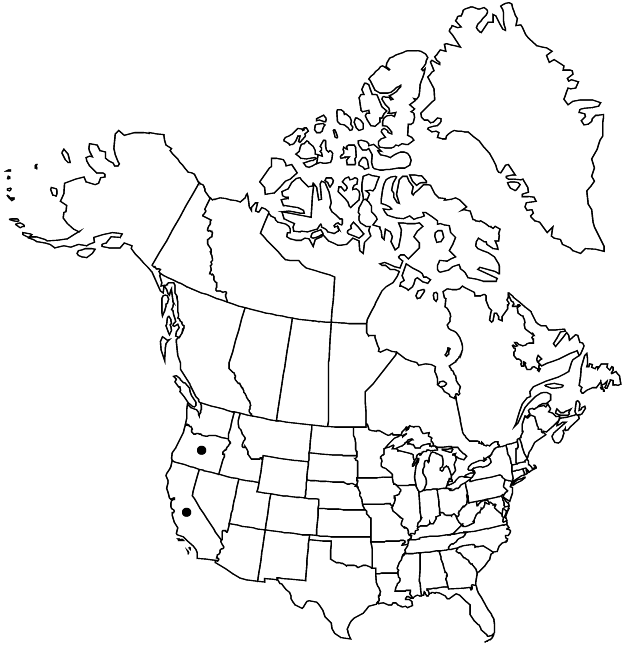Difference between revisions of "Minuartia howellii"
Bot. Jahrb. Syst. 57(Beibl. 126): 27. 1921.
FNA>Volume Importer |
FNA>Volume Importer |
Revision as of 22:33, 16 December 2019
Plants annual. Taproots moderately stout. Stems erect to spreading, green, becoming purple, 12–30 cm, mostly glabrous, internodes of all stems 2–7 times as long as leaves. Leaves sometimes overlapping proximally, often connate proximally, with loose, scarious to herbaceous sheath 0.2–0.5 mm; blade straight to recurved, green, becoming purple, concave, prominently 1(–3)-veined abaxially, linear-lanceolate, 5–15 × 1–2.5 mm, rigid, margins not thickened, slightly scarious, smooth, apex green to purple, obtuse to acute, often apiculate, flat to navicular, dull, densely stipitate-glandular; axillary leaves absent. Inflorescences 5–25+-flowered, open cymes; bracts lanceolate to ovate, herbaceous. Pedicels 0.3–4+ cm, stipitate-glandular. Flowers: hypanthium disc-shaped; sepals weakly veined proximally, ovate (herbaceous portion ovate to narrowly so), 1.9–3 mm, not enlarging in fruit, apex often purple, ± acute to acuminate, not hooded, stipitate-glandular proximally; petals oblanceolate, 1.8–2.3 times as long as sepals, apex rounded, entire. Capsules on stipe ca. 0.2 mm, broadly ovoid, 2.7–3.5 mm, usually longer than sepals. Seeds blackish brown, suborbiculate with radicle prolonged to rounded beak, somewhat compressed, 1.4–1.7 mm, tuberculate; tubercles low, rounded, often elongate.
Phenology: Flowering spring–summer.
Habitat: Chaparral, Jeffrey pine-oak woodlands, serpentine
Elevation: 500-1000 m
Discussion
Selected References
None.
